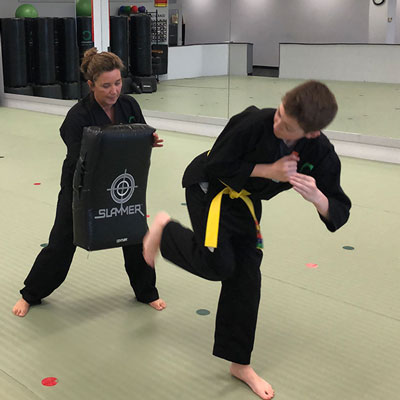[The Four “P’s” of Teaching] Part One: Push
By CPMAstudio In InsightMartial Arts training includes several different teaching and learning formats with “Kata” training as one of the most well-known. Kata refers to the detailed, dance-like, choreographed sequences of movement designed to impart both technical skills and a certain inner “spirit,” or essential quality. It is thought that if you master the external “form” of the movements, you would then be able to generate or embody powerful and elemental internal forces that would make you formidable in combat and in life. Kata are highly meditative, and highly impactful when done well. They create a very powerful sense of physical integration and connectedness. Plus, they can be fun to do. We’ll talk more about fun in Part Four of the “Four P’s.”
 Kata have some strong advantages: they help create a consistent experience, where every student is learning the same thing, they make it easy to teach large groups of students at once, and they can build a strong sense of discipline and group energy. There is something inspiring and exhilarating about being part of a group of people moving together with power, focus, and grace, and it is a great experience as a teacher to help build that kind of group output in your martial arts class.
Kata have some strong advantages: they help create a consistent experience, where every student is learning the same thing, they make it easy to teach large groups of students at once, and they can build a strong sense of discipline and group energy. There is something inspiring and exhilarating about being part of a group of people moving together with power, focus, and grace, and it is a great experience as a teacher to help build that kind of group output in your martial arts class.
However, the power of drill is also its peril. While it is great to build a strong class of students moving together, our goal is to help each individual develop and refine their powers of concentration, discipline, strength, and coordination. Rely too much on group drill, and you turn a class of excited and curious young people into a group of cadets, and you turn yourself from the teacher of an art form into a barefoot martinet. If you focus too much on the exterior form, you lose the essence, not just of the Kata, but also of the students.
It’s too much push.
Push is the act of delivering content. Think about sitting in a lecture hall in college listening to an expert on Shakespeare, or sitting at the dinner table listening to a grandparent. Push is powerful, particularly when the narrative or the information is compelling, the communicator is an expert, and the right setting is right. Push can deliver huge amounts of information in short periods of time. Push can also be deadly, think PowerPoint Presentation in a stuffy conference room at 3 PM. Brutal.
Pushing too much information is an easy mistake to make, one I’ve made more often than I’d like to think about. Teaching is communication, and communication is a two-way street. It’s very common to plan out what you want to say, but fail to plan how to create receptivity. On the other hand, there are few things more engrossing and fascinating than learning from someone who is an absolute master of their subject. In those instances, push can be an art form, because their mastery of the subject can literally transform your knowledge of the subject as well. I am sure we have known people like that, fascinating, masterful, insightful. To listen to them was to be changed.
Good teachers and communicators know how much is enough, and how to vary their tone, speed, and other factors to make push more compelling and sustainable. Sometimes I do have to step up, demonstrate a few basics and get everyone to move the way they’re supposed to, I literally push our students, creating and controlling the energy directly. It is an important tool, and it’s effective in measured doses. However, if that were the only tool in the kit, nobody would learn much of anything. Good teachers have to be able to do more than deliver content.
Good Teachers have to know how to Pull. More on that next month; see you then!
— Andy



